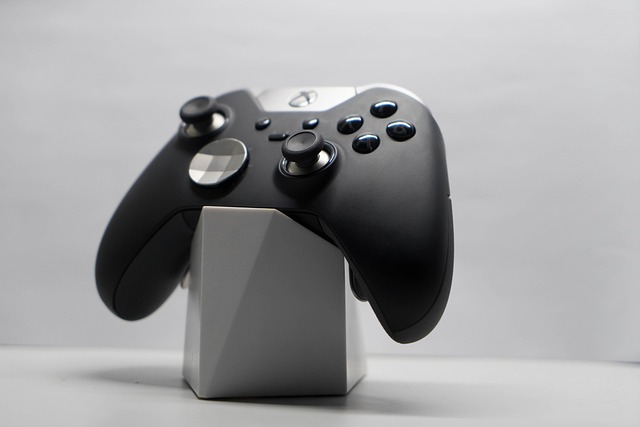How to Choose an Immersive Device for Comfortable Extended Use
Choosing an immersive device for long sessions means balancing visual comfort, fit, and system behavior. This overview highlights display characteristics, tracking, controllers, ergonomics, audio, and practical setup considerations to help you evaluate devices for sustained use without undue strain or interruptions.

Selecting an immersive device for comfortable extended use requires more than headline specs. Prolonged sessions expose design and performance trade-offs that affect eye strain, motion sickness, and physical fatigue. Assessing display factors, tracking stability, controller ergonomics, and environmental setup helps you choose a headset that supports long-term use while matching your intended content and space.
Immersive design and ergonomics
Comfort starts with weight distribution, padding, and adjustability. Look for a headset that balances front-to-back weight, offers multiple strap adjustments, and uses breathable face cushions to reduce pressure and heat. Interchangeable padding or aftermarket options can improve fit for different face shapes. Consider how the headset sits with glasses or prescription inserts and whether the headband design allows stable fit during movement. Ergonomics also cover controller shape and reach; controllers that fit naturally reduce wrist and hand fatigue during long sessions.
Display: resolution, fov, and latency
Display characteristics directly affect visual comfort. Higher resolution reduces visible screen-door effect and improves text and interface clarity, while field of view (FOV) influences immersion; wider FOVs can feel more natural but may demand more from rendering hardware. Latency — the time between head movement and visible update — is critical: lower latency reduces motion-induced discomfort. Balance resolution and refresh rate with your device’s rendering capability; mismatched settings can raise latency or cause dropped frames, increasing strain over long sessions.
Tracking, controllers, and haptics
Reliable tracking keeps virtual objects stable and reduces disorientation. Inside-out camera tracking is convenient for many setups, while external base stations can offer higher precision for demanding use cases. Controller ergonomics and button layout matter for repetitive tasks; choose controllers with intuitive grips and well-spaced inputs. Haptics provide tactile feedback that can improve presence and reduce the need for visual confirmation. Evaluate how tracking performs near windows or reflective surfaces and whether firmware updates improve stability.
Audio, calibration, and compatibility
Audio quality and tuning options affect immersion and comfort. Built-in spatial audio is useful for portability, while detachable headphones or support for external audio may offer better fidelity for longer sessions. Calibration tools—IPD (interpupillary distance) adjustment, eye-tracking calibration, and software-based comfort settings—help tailor the system to your physiology. Compatibility with your platform and software ecosystem ensures that apps you rely on for long sessions will work as expected and receive updates.
Standalone vs tethered and battery considerations
Standalone devices offer freedom from cables, reducing tripping hazards and simplifying roomscale movement, but battery life becomes a limiting factor for extended use. Tethered headsets provide consistent power and higher performance potential but require managing cable routing and possibly a nearby PC or console. If choosing standalone, check typical battery runtimes and whether hot-swappable batteries or external power options are supported. For tethered setups, evaluate cable length, passthrough options, and whether wireless adapters are available for your system.
Roomscale, setup, and product comparisons
Roomscale capability and initial setup effort influence how comfortably you can use a device for longer periods. Sensors, play area requirements, and calibration routines determine how easily the system adapts to your space. Below is a concise comparison of representative consumer devices to illustrate differences in approach and typical cost estimates.
| Product/Service Name | Provider | Key Features | Cost Estimation (if applicable) |
|---|---|---|---|
| Quest 3 | Meta | Standalone headset, inside-out tracking, built-in audio, approx. mid-range performance | ~$400–$600 |
| Valve Index | Valve | High-refresh-rate tethered display, external base station tracking, ergonomic controllers | ~$900–$1000+ |
| PlayStation VR2 | Sony | Tethered to console, haptic controllers, eye-tracking, high-fidelity display | ~$550–$600 |
Prices, rates, or cost estimates mentioned in this article are based on the latest available information but may change over time. Independent research is advised before making financial decisions.
Conclusion Comfortable extended use of an immersive device depends on an integrated assessment of ergonomics, display performance, tracking reliability, and how the device fits your environment. Prioritize adjustable fit, low-latency displays, stable tracking, and controller comfort. Consider whether standalone freedom or tethered consistency better suits your longest sessions, and verify compatibility with the software and accessories you need. Thoughtful calibration and a tailored physical setup can help reduce fatigue and make longer experiences more sustainable.






